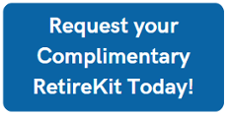Choosing an IRA rollover means that your money remains tax-advantaged and capable of growth, as in a University of Missouri-sponsored plan. You may also gain more investment options than what may have been available in your University of Missouri-sponsored plan. You may also gain oversight of managing these important retirement assets from your trusted Advisor.
If you roll your retirement plan assets over into an IRA account that you already own through your Advisor, you also receive the benefit of combined statements and holistic investment planning, making it easier to track your overall financial situation.
| 'Receive the benefit of combined statements and holistic investment planning, making it easier to track your overall financial situation.' |

|
Some of the benefits of rolling your money into an IRA include:
Tax-deferred growth potential: This generally avoids current income tax and distribution penalties when removed from a University of Missouri-sponsored retirement plan.
More investment choices: This allows for additional contributions, if eligible. IRAs can be combined and handled by one provider, thereby reducing trustee costs and consolidating statements. Protection from creditors in federal bankruptcy proceedings. The combined amount of your required minimum distributions (RMDs) can be taken from any of your Traditional, SEP or SIMPLE IRAs.
However, there are also some important considerations that University of Missouri should make before rolling over their money into an IRA, these include:
- Internal management fees might be higher than in a University of Missouri-sponsored retirement plan.
- Fees and expenses depend largely on the investments you choose.
- Loans from an IRA are not allowed.
- Early distributions may be subject to a 10% IRS tax penalty in addition to income tax.
- RMDs begin April 1 following the year you reach 70½ and annually thereafter; leaving the money in the former Fortune-500 plan may allow RMDs to be delayed until separation from service.
- IRAs are subject to state laws governing malpractice, divorce, creditors (outside of bankruptcy), and other lawsuits; leaving the money in the former University of Missouri-plan may provide additional protection against creditors.
- Net unrealized appreciation (NUA) is the difference between what you paid for employer securities and their increased value. You lose favorable tax treatment of NUA if the funds are rolled into an IRA.
Hopefully, these insights will be helpful as you plan your retirement from University of Missouri.
For more information about this topic, view our e-book here: https://retirekit.theretirementgroup.com/will-your-retirement-plan-retire-with-you-e-brochure-offer
Featured Video
Articles you may find interesting:
- Corporate Employees: 8 Factors When Choosing a Mutual Fund
- Use of Escrow Accounts: Divorce
- Medicare Open Enrollment for Corporate Employees: Cost Changes in 2024!
- Stages of Retirement for Corporate Employees
- 7 Things to Consider Before Leaving Your Company
- How Are Workers Impacted by Inflation & Rising Interest Rates?
- Lump-Sum vs Annuity and Rising Interest Rates
- Internal Revenue Code Section 409A (Governing Nonqualified Deferred Compensation Plans)
- Corporate Employees: Do NOT Believe These 6 Retirement Myths!
- 401K, Social Security, Pension – How to Maximize Your Options
- Have You Looked at Your 401(k) Plan Recently?
- 11 Questions You Should Ask Yourself When Planning for Retirement
- Worst Month of Layoffs In Over a Year!
- Corporate Employees: 8 Factors When Choosing a Mutual Fund
- Use of Escrow Accounts: Divorce
- Medicare Open Enrollment for Corporate Employees: Cost Changes in 2024!
- Stages of Retirement for Corporate Employees
- 7 Things to Consider Before Leaving Your Company
- How Are Workers Impacted by Inflation & Rising Interest Rates?
- Lump-Sum vs Annuity and Rising Interest Rates
- Internal Revenue Code Section 409A (Governing Nonqualified Deferred Compensation Plans)
- Corporate Employees: Do NOT Believe These 6 Retirement Myths!
- 401K, Social Security, Pension – How to Maximize Your Options
- Have You Looked at Your 401(k) Plan Recently?
- 11 Questions You Should Ask Yourself When Planning for Retirement
- Worst Month of Layoffs In Over a Year!
How does the eligibility criteria for the Defined Benefit Retirement Plan at the University of Missouri System differ for Level One and Level Two members, particularly in regard to their hire or rehire dates?
Eligibility Criteria for Level One and Level Two Members: Level One members are employees hired before October 1, 2012, or those rehired before October 1, 2019, who had earned a vested benefit but did not receive a lump sum. Level Two members are those hired or rehired between October 1, 2012, and October 1, 2019, without eligibility for Level One benefits. Employees hired after October 1, 2019, do not accrue service credit under the DB Plan(University of Missouri …).
In what ways do service credits accumulated at the University of Missouri System impact an employee's retirement benefits, and how can employees ensure that they effectively maximize their service credit over the years?
Impact of Service Credits on Retirement Benefits: Service credits are critical in calculating retirement benefits at the University of Missouri System. Employees accumulate service credits based on their years of service, which directly affect their pension calculations. Maximizing service credits involves consistent full-time employment without breaks, as any leave of absence or part-time status may impact the total service credits earned(University of Missouri …)(University of Missouri …).
What are the various options available to employees at the University of Missouri System for receiving their retirement benefits upon reaching normal retirement age, and how do these options influence long-term financial planning for retirement?
Retirement Benefit Options: Upon reaching normal retirement age, employees can choose between a Single Life Annuity or a Joint and Survivor Annuity, both with options for lump-sum payments of 10%, 20%, or 30% of the actuarial present value. These choices influence monthly payout amounts, and selecting a lump sum reduces future monthly benefits proportionally(University of Missouri …).
With respect to the University of Missouri System's Defined Benefit Plan, how are employees' contributions structured, and what implications does this have for their overall retirement savings strategy?
Employee Contributions: Employees contribute 1% of their salary up to $50,000 and 2% for earnings beyond that threshold. This structure helps fund the DB Plan, with the University covering the majority of the cost. Employees need to factor in these contributions as part of their overall retirement savings strategy(University of Missouri …).
How can employees at the University of Missouri System assess their eligibility for early retirement benefits, and what considerations should be taken into account when planning for an early retirement?
Early Retirement Eligibility: Employees may retire early if they meet specific criteria: at least 10 years of service credit for ages 55–60 or at least 5 years of service credit for ages 60–65. Early retirees will receive a reduced benefit to account for the longer payout period(University of Missouri …).
What tax implications should employees of the University of Missouri System be aware of when it comes to distributions from their retirement plans, and how can they effectively navigate these implications?
Tax Implications of Retirement Plan Distributions: Distributions from the University of Missouri System’s DB Plan are subject to federal taxes. Employees can mitigate tax burdens by electing to roll over lump-sum distributions to a qualified retirement account, such as an IRA, to avoid immediate tax liability(University of Missouri …).
What are the policies regarding the continuation of benefits for employees who leave the University of Missouri System, particularly for those who are not vested or are classified as non-vested members?
Non-Vested Employee Policies: Employees who leave the University before vesting in the DB Plan (fewer than 5 years of service) are not eligible for retirement benefits but can receive a refund of their contributions. These non-vested employees must decide whether to receive their refunded contributions as a lump sum or through a rollover to another retirement account(University of Missouri …).
How might changes in employment status, such as taking a leave of absence or returning to work after a break, affect the service credit calculation for an employee at the University of Missouri System?
Impact of Employment Status Changes on Service Credit: Employees who take leaves of absence or return after breaks in employment may experience reductions in service credit. However, certain types of leave, such as military service or medical leave, may allow employees to continue earning service credit(University of Missouri …)(University of Missouri …).
In the event of an employee's death prior to retirement, what benefits are available to their survivors under the University of Missouri System's Defined Benefit Plan, and how can members ensure their wishes are respected?
Survivor Benefits: In the event of an employee’s death before retirement, survivors may be eligible for either a lump sum or monthly payments. Employees can designate beneficiaries to ensure that their wishes are honored, providing financial protection for dependents(University of Missouri …).
How can an employee at the University of Missouri System contact the Human Resources Service Center to obtain personalized assistance regarding their retirement options and any inquiries related to their retirement plan details? These questions require detailed answers and are designed to facilitate a comprehensive understanding of retirement processes and options for employees of the University of Missouri System.
Contacting HR for Assistance: Employees can contact the Human Resources Service Center for personalized assistance regarding their retirement options by emailing hrservicecenter@umsystem.edu or visiting the myHR portal for further details(University of Missouri …).





-2.png?width=300&height=200&name=office-builing-main-lobby%20(52)-2.png)









.webp?width=300&height=200&name=office-builing-main-lobby%20(27).webp)


-2.png)









.webp)